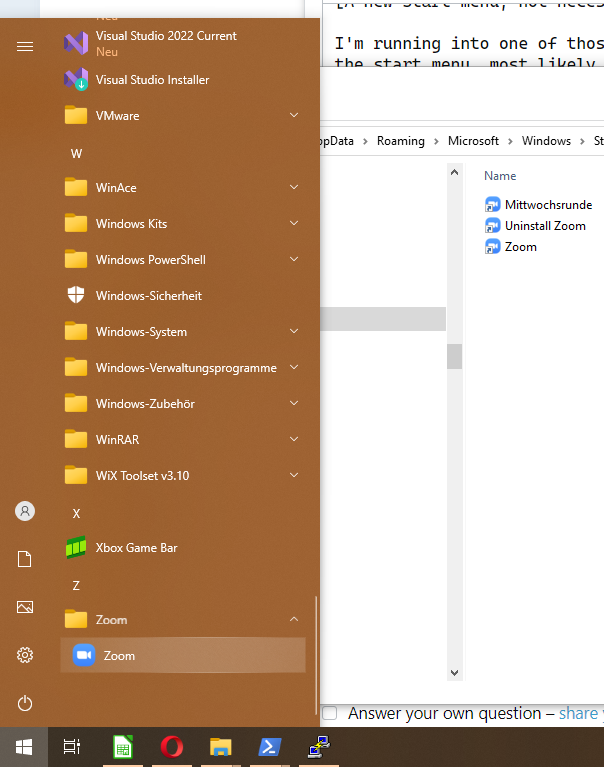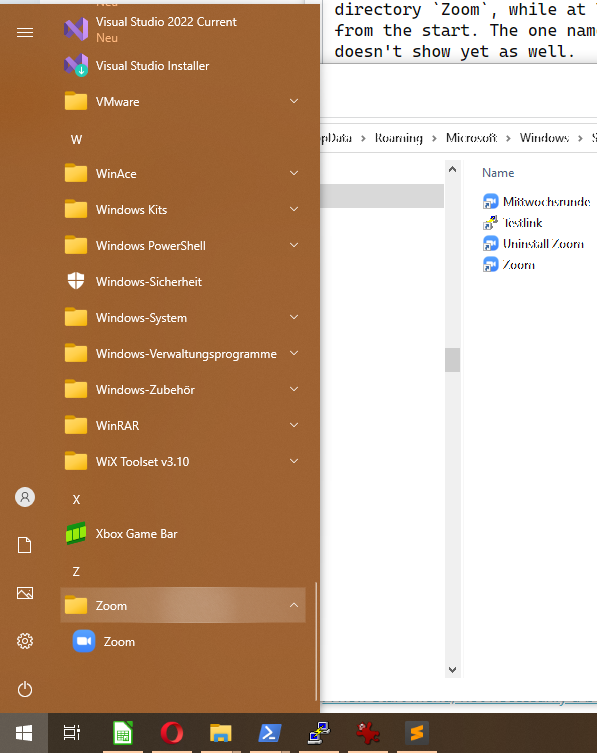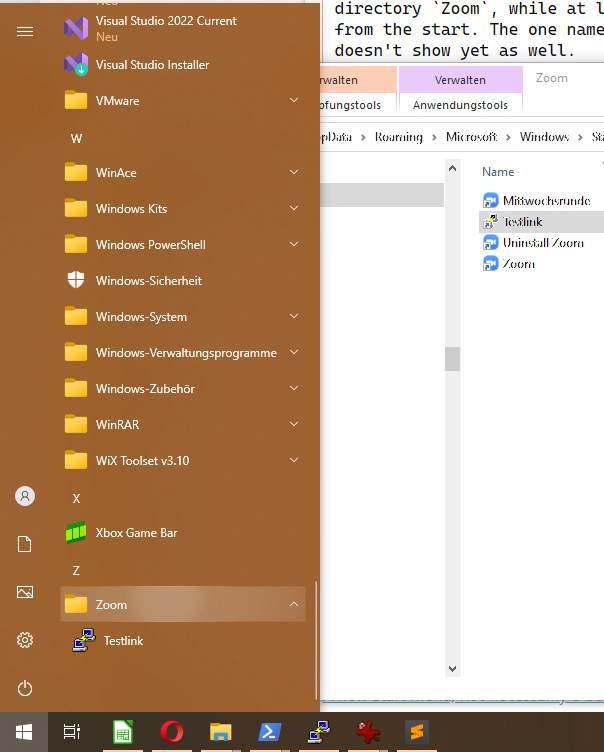
Under which conditions does the Windows 10 start menu use low level files and folders?
In contrast to former versions of Windows, the start menu of Windows 10 is not entirely and directly based on a directory structure anymore. Instead, there's a process reading those directories under certain circumstances and writing entries into some intermediate database, from which the content of the start menu is then build. The reading process as well as the intermediate database have certain limitations, like only 500 entries at all in the past, entries not being updated regularly or at all or soon enough etc. In fact, this process is very fragile and there are a lot of problems associated with it.
A new Start menu, not necessarily a better one
How to fix / refresh start menu in Windows 10? How to add / remove / edit items in bulk?
Some Win32 apps missing from Start menu "All Programs" list and search
I'm running into one of those problems right now: There's one folder successfully shown in the start menu, most likely because the associated app installed itself per user. Though, the installer created two links in that folder, while only one is shown and when adding an additional one manually, that never shows at all. I've tried to add some new directories with some additional new links etc. as well and none of those showed at all.

In the above screenshot one can see that the start menu only shows one link within the directory Zoom, while at least the additional link to uninstall has been available right from the start. The one named Mittwochsrunde has been added by me weeks ago already and doesn't show yet as well.
Though, it's not that all changes are ignored always: When I hide the directory Zoom using file system attributes, the directory is hidden in the start menu as well. When I change to show again, the entry in the start menu is there again. What doesn't work even after hiding/showing is that the additional links will be shown in the start menu.
And I've recognized one additional interesting thing: I've copied the link for Mittwochsrunde to a different file name, which was NOT shown as well. Afterwards I changed the command line within that link to point to an arbitrary unrelated file. That made the link show in the start menu instantly! Though, the formerly link named Zoom was NOT visible anymore. To make things worse, I was able to even change the icon within the newly created link and that change showed up instantly again.
OTOH, when I change the command line back to that of the link Mittwochsrunde, the newly created link is not shown anymore any only the originally available entry for Zoom. That is interesting, because the uninstall entry points to a different EXE as well and I have other entries related to Visual Studio which share the path to the EXE in their command line, but are all shown. Those VS-entries point to the same EXE with different arguments, which is exactly what I'm trying to achieve with Zoom as well.


So, in the end, file system level changes to impact start menu entries: Attributes for hidden files are used, new files recognized at all, but shown only depending on their command line etc.
Are there any docs somewhere documenting all of those different conditions and the interaction between the start menu?
Thanks!
Windows for business | Windows Client for IT Pros | User experience | Other
